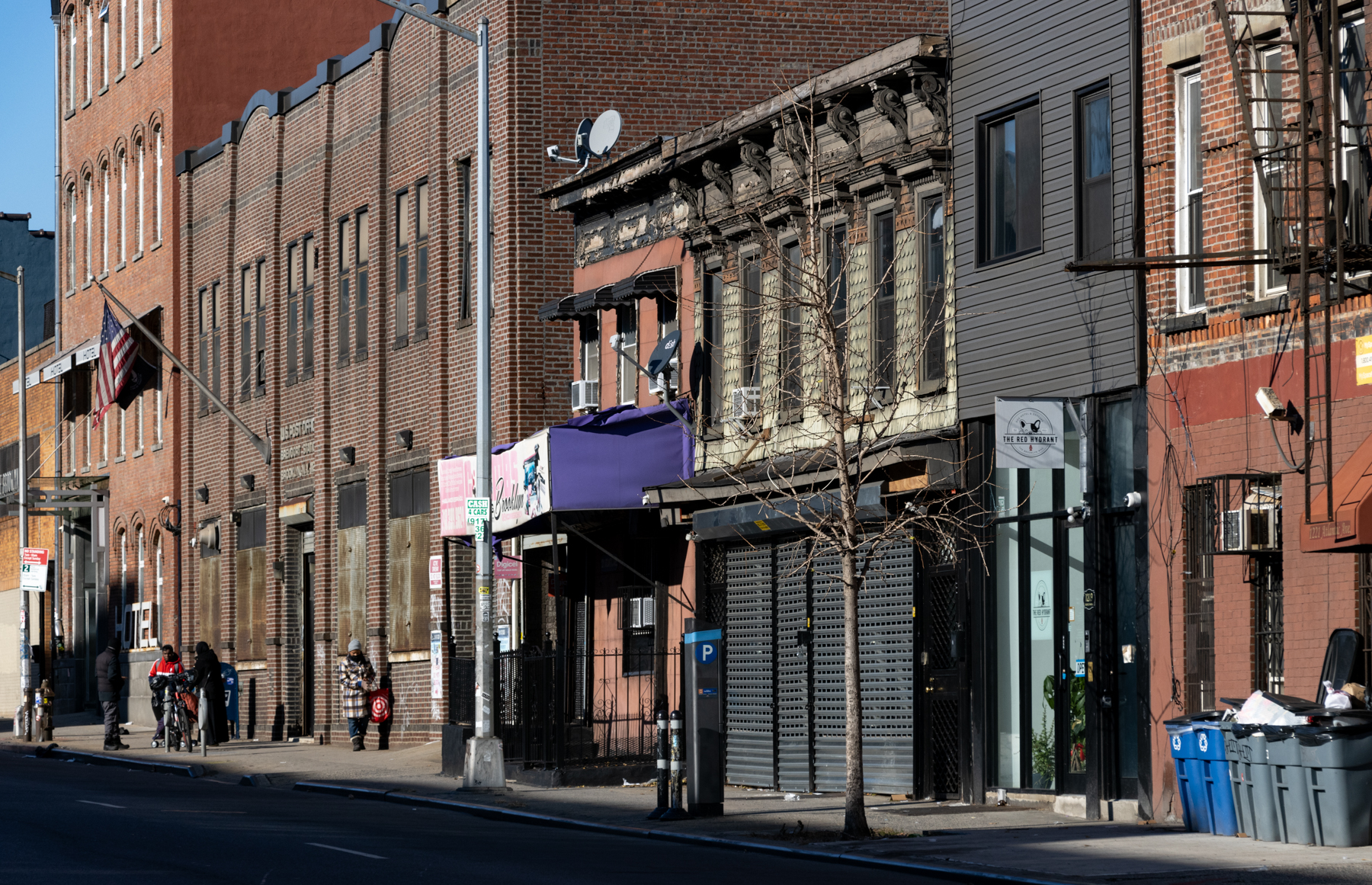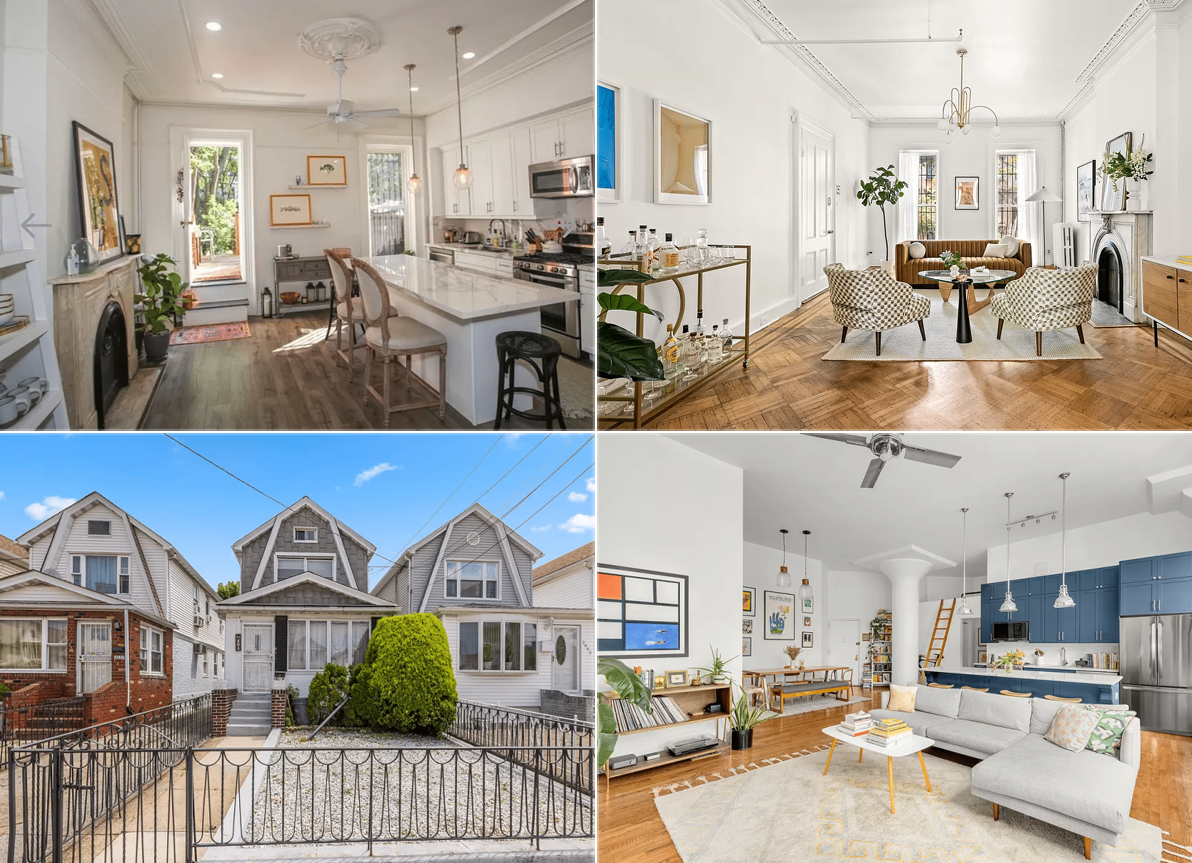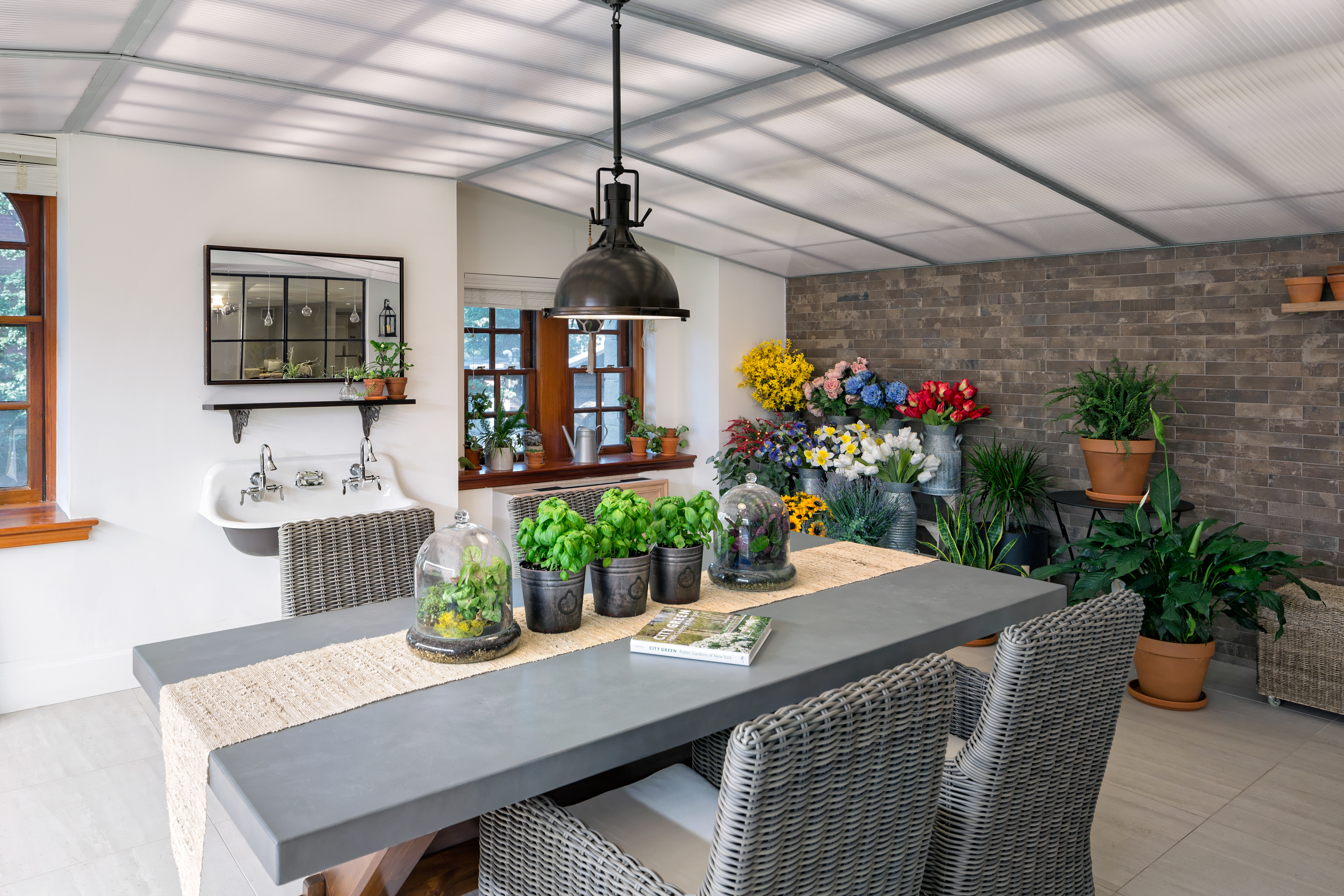Walkabout: Architecture - The Neo-Grec Style
Brooklyn was growing by leaps and bounds in the 1870s. Most of our brownstone neighborhoods were well established by this time, and demand for homes was high. The Italianate style was still the popular architectural style of the day for row houses and mansions alike. Elaborate and florid carved acanthus leaf ornament flanked the lintels…


Brooklyn was growing by leaps and bounds in the 1870s. Most of our brownstone neighborhoods were well established by this time, and demand for homes was high.
The Italianate style was still the popular architectural style of the day for row houses and mansions alike. Elaborate and florid carved acanthus leaf ornament flanked the lintels and windows of these homes, often accompanied by heavy window and door frames, ledges, and cornices.
Inside the homes, the decor was equally florid and ornamental, with heavily carved and upholstered furniture, lots of rugs, doodads, draperies, paintings, sculpture and stuff.

Numerous innovations and inventions in mass production enabled factories to churn out relatively inexpensive items for the home, and much like recent periods in our own time, more was definitely more.
Around this time in England, architect and social critic Charles Eastlake had published his revolutionary book, Hints on Household Tastes in Furniture, Upholstery and Other Details.
The book was a huge success in England, and was published in the U.S. in 1872. In it, Eastlake embraced the Arts and Crafts ideal of having furniture and decor made simply, and by hand.

This was in direct opposition to the overblown excesses of the period, on both continents, and many of his ideas and designs for simpler furniture and furnishings resonated with the public.
In America, his designs utilizing simpler shapes with incised carved ornament were picked up by manufacturers and Eastlake furniture, and the Eastlake style became an American phenomenon. We see Charles Eastlake’s unintentional influence in the row house building style known as Neo-Grec.
Like the Italianate style, with which it is often combined, the Neo-Grec style row house has a smooth brownstone front, with a pronounced deep cornice, heavy entryway and window details. Instead of the organic, curved, foliate and very feminine lines of Italianate ornament, Neo-Grec is very masculine in its severity, with angular incised lines and forms, geometric and precise.
The curved window and door frames were replaced by squared off edges, the large lintels replaced with equally large rectangular blocks. On the steep steps, the large balusters ended in squared off cast iron and stone newel posts, with incised ornament, and geometric detail.

The most striking and signature aspect of Neo-Grec brownstone architecture is the incised carved detail, appearing on window ledges, door frames, and most grandly and beautifully, on the flat surface of the brownstone building.
The two most popular styles were an incised flower and vine design known as the Eastlake Motif, and Neo-Grec Fluting, long lines of carved parallel lines, usually appearing on sills, door hoods and pilasters and brackets.
It is not coincidental that this regulated and precise style appears at a time when American society is increasingly becoming mechanized, and the factory has replaced the farm as the working place of more and more people.

It is also not coincidental that this style becomes popular at the time of a great building boom.
It was much less expensive to carve these relatively simple designs, as opposed to the much more elaborate Italianate forms, and a stone carver need not be as skilled, nor demand as much pay, always a consideration for builders since the dawn of time.
Mechanical planers and groove cutting routers of the time, along with the pneumatic drill, invented in 1871, made short work of the soft sandstone, allowing deep, but delicate and precise ornament that has lasted almost 150 years.

Some of the ornament has an Egyptian or Mesopotamian look about it, in the shapes and themes of the brackets surrounding doorways, especially.
Along with Eastlake’s movement, England and America were embarking on what is now called the Aesthetic Movement, a style of design, decor and lifestyle very highly influenced by exploration of the world outside of Europe.
Archeological discoveries in Egypt, the opening up of Japan and the Far East to Western trade, and more and more upper class people embarking on Grand Tours to exotic places all over the world had a great influence on society and in the public taste.

Eastlake himself was horrified at how his design was translated in America, as it eventually became as complicated and overly ornate as the furniture it replaced, and was definitely not handmade or lovingly crafted by skilled artisans. But the style and the name has endured.
In our brownstones, we see the familiar incised floral and geometric Eastlake motifs on interior woodwork, on marble and wooden mantelpieces, pier mirrors, door and window frames, and on the wooden newel posts and banisters.
Neo-Grec row houses appear in most of our brownstone neighborhoods. Numerous and excellent examples can be found in Brooklyn Heights, Fort Greene/Clinton Hill, Prospect Heights, Boerum Hill, Cobble Hill and Carroll Gardens.

By contrast, we have relatively few in Crown Heights North, although the ones we have are quite fine. The greatest concentration of Neo-Grec houses are in Bedford Stuyvesant, followed by Park Slope, from my casual observation.
In Bedford Stuyvesant, and elsewhere, many of these were designed by architect Amzi Hill, the master of Neo-Grec.
Thursday’s column will continue with a look at Amzi Hill’s life and career, and more on the Neo-Grec style. Please check out the many photos on my Flickr page.




[Photos by Suzanne Spellen]
Related Stories
Walkabout: Amzi and Henry Hill, Architects
Top 10 Things You Should Know Before Renovating an Old House
The Aesthetic Movement (Part I)
Email tips@brownstoner.com with further comments, questions or tips. Follow Brownstoner on Twitter and Instagram, and like us on Facebook.
[sc:daily-email-signup ]









Thanks, MM, for the confirmation regarding some of the Eastlake designs I’ve seen in the Slope the seem to be slurried.
They look excellent, btw, slurry or no slurry.
In the past, they’ve confused me, because they have a different aesthetic from most of the remainder of the neighborhood.
Very interesting!
Mopar- it’s a deal! I collect ones with birds and love any of them with butterflies and insects too.
Pigeon, you are probably correct about the new ones, unless someone has a real artist on the payroll. It wouldn’t be hard to make a plaster mold out of an original and use it to emboss the new slurry.
Thank you all for the great ideas. I will totally check these out tomorrow. And Bxgrl, I’ll show you my plates if you show me yours. I have a handful of blue ones with butterflies and insects from my great grandmother.
Awesome post, MM!
Thanks for the education!
I have a question.
If I understand correctly, the swirly vine-like incised ornaments, such as in the main photo accompanying this post (and also in the 12th photo on the flicker page, titled “MacDonough St. Bed Stuy”) were made by carving into the brownstone. Right? I’ve seen some of these ornaments on the facades of brownstones that look very new, and that I believe have been re-created using slurry. When these designes are recreated, they seem, to my eye, to be impressed into slurry, not carved. Is my perception accurate?
Mopar, check out Mason-Wolf papers. Cheaper than Bradbury and Morris. Many Aesthetic Movement patterns. Some of the Dresser patterns are very contemporary. He was a genius.
http://mason-wolf.com/collection.htm
Mopar: Many of the William Morris patterns (fabric and wallpaper) look wonderful with Eastlake houses. Among my favorites are arbutus, willow bough, and jasmine. You can see their patterns at william-morris.co.uk and they’re distributed by Zoffany in New York. My next project is to wallpaper our dressing room area with a Morris print. It’s expensive stuff but creates lots of impact in a small space.
mopar- you are very lucky! I love Eastlake -the Americanized version, sorry Mr. Eastlake. Especially the Aesthetic Movement. I even have some beautiful antique plates.
Thanks MM- we await your column on Amzi Hill.
Sigh, flutter flutter. I love Eastlake and the Aesthetic movement. I like the geometric designs, from the geometric floral carvings here to the tile entry ways.
Though it is an enduring mystery why if you look in the Charles Eastlake book, the illustrations look nothing like what we call Eastlake. Most of it is very heavy gothic and medieval style furniture.
I bought an Eastlake style house, and I’m looking around for contemporary print motifs with a similar flavor. I’ve got plans for wallpaper, fabric, dinner plates. I may even use some ‘crowdsourced” designs at Spoonflower (custom fabric printing) and we may make our own custom print wallpaper, which you can do now online.
The original wallpaper that came with the house also used a lot of geometric designs (mid century versions) — I think maybe the previous owner and I had similar taste. 🙂